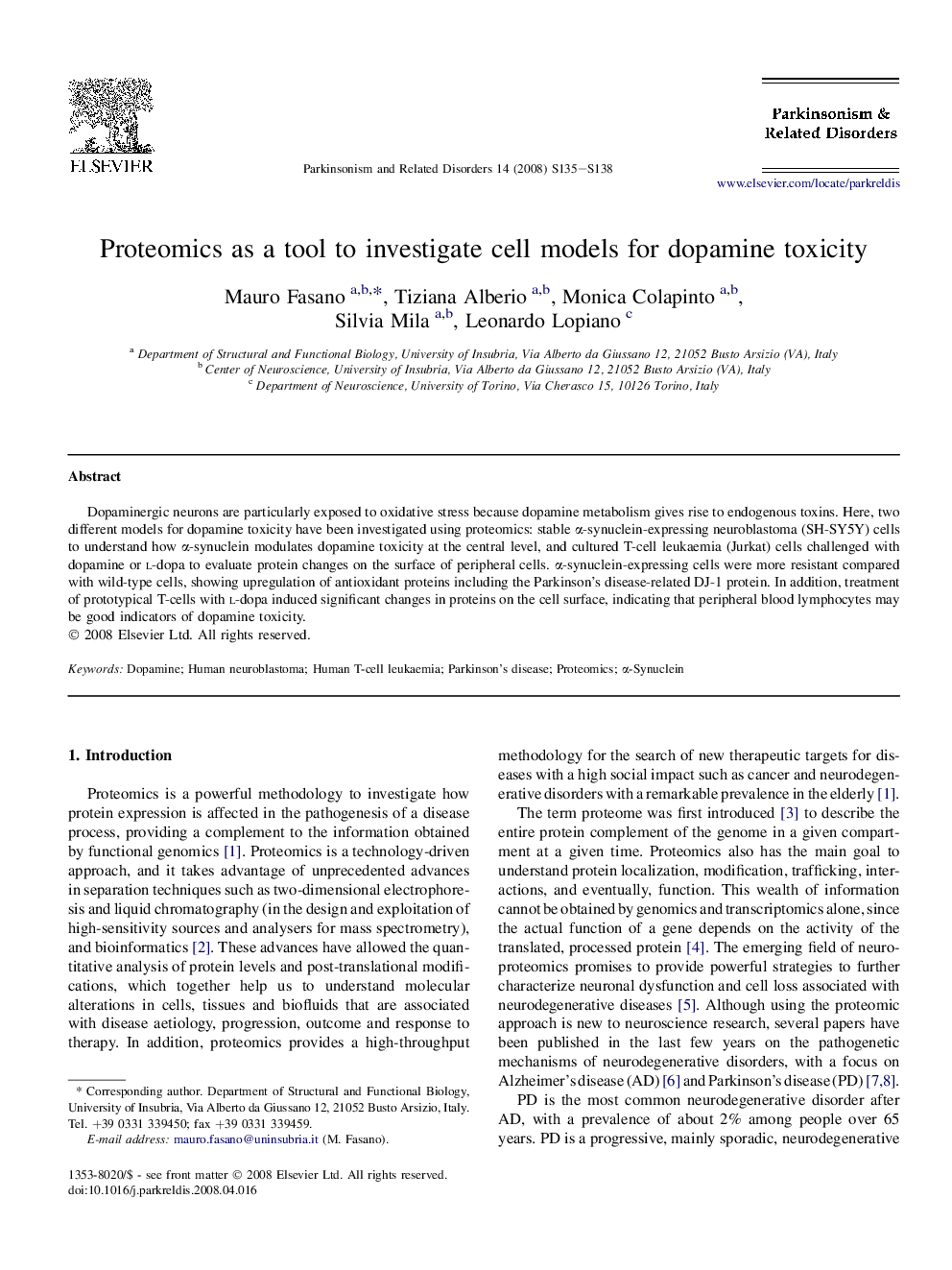| Article ID | Journal | Published Year | Pages | File Type |
|---|---|---|---|---|
| 1921718 | Parkinsonism & Related Disorders | 2008 | 4 Pages |
Dopaminergic neurons are particularly exposed to oxidative stress because dopamine metabolism gives rise to endogenous toxins. Here, two different models for dopamine toxicity have been investigated using proteomics: stable α-synuclein-expressing neuroblastoma (SH-SY5Y) cells to understand how α-synuclein modulates dopamine toxicity at the central level, and cultured T-cell leukaemia (Jurkat) cells challenged with dopamine or l-dopa to evaluate protein changes on the surface of peripheral cells. α-synuclein-expressing cells were more resistant compared with wild-type cells, showing upregulation of antioxidant proteins including the Parkinson's disease-related DJ-1 protein. In addition, treatment of prototypical T-cells with l-dopa induced significant changes in proteins on the cell surface, indicating that peripheral blood lymphocytes may be good indicators of dopamine toxicity.
